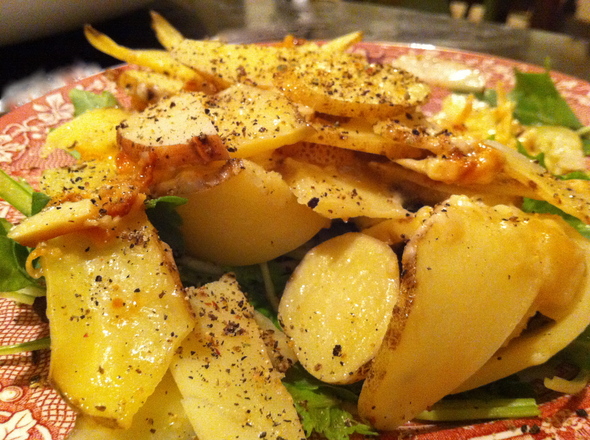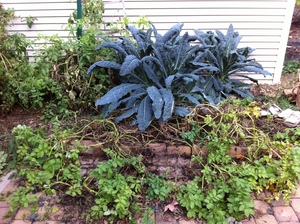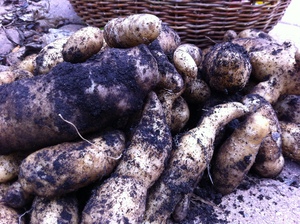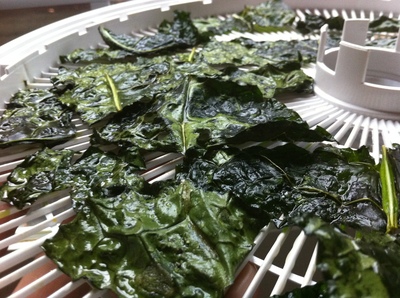Time to harvest potatoes! (and make Potatoes Savoyarde)
/
According to the Master Gardener vegetable lesson, potatoes need to be harvested when leaves turn yellow. Deciding to split the difference between a full display of yellow wilted greenery and cold hands, we dug ours last weekend. Just like our kale, our La Ratte potatoes were an unplanned gift from last years planting.
In honor of the potato’s French origin, I decided to use it in a classic French dish - Potatoes Savoyarde.
And wow.
However, before I discuss the dish, I will ponder the potato. Potatoes are not the most glamorous of vegetables. The mind turns to the Irish famine and Van Gogh’s piercing portrait of peasant poverty, The Potato Eaters. Yet those two examples illustrate precisely the importance of this vital tuber in our consciousness and culinary landscape.
They are the workhorse of the kitchen - with many different applications. The potato is baked on the streets of London with cottage cheese and brown sauce, made into gnocchi in Italy and covered with a chili cheese sauce in Peru (Papa a la Huancaina), the first home of the potato.

According to the USDA, the potato is the leading vegetable crop in the United States, with a total production of 41.3 billion pounds. In 2007, the average American consumed 126 pounds: 43.6 fresh pounds and 82.4 processed (mostly frozen). In 1960, the average American consumed 106.3 pounds: 81.0 fresh pounds and 25.3 processed pounds - a fascinating reversal. Whether you are eating a potato frozen, fresh, as chips, or dehydrated - the likelihood is that you are a eating a potato.
Until we started growing potatoes I had no idea what a treat it is to harvest them. Each new vegetable emerged out of the black soft earth as a gift. After continually mounding up the stems of the plants to create a full hill over the summer, the potatoes were easy to pull up out of the mulch and leaves. I felt like it was my birthday.
And yes, Potatoes Savoyarde is a variant on the classic Potatoes Dauphinoise (au gratin)- and choosing to do it with the La Ratte from our garden, “a top quality fingerling†according to Seed Savers Exchange, was a special treat with the robust nuttiness of the vegetable off-setting the cheese. As with all things baked, when presented with a recipe, I used what was in the house - and the result was sublime.
I prefer Savoyarde to the Dauphinoise (au gratin) because it uses stock instead of milk or cream. I was taught to sprinkle cheese between the layers of potato throughout the process instead of putting the cheese only on top.
Potatoes Savoyarde: Take a baking dish, cover the bottom with a layer of lard, overlap thinly sliced potatoes, sprinkle cheese (swiss cheese works best), layer of potatoes, thin layer of cheese, layer of potatoes, thin layer of cheese, etc. Once the concoction reaches the top of the dish, finish it off by pouring chicken/veggie stock into dish until about half full. Finish with another sprinkle of cheese. For about 1 ½ inch of potatoes cook for 60 minutes at 350 degrees.
Bon appetit!
Here is the article on annarbor.com





